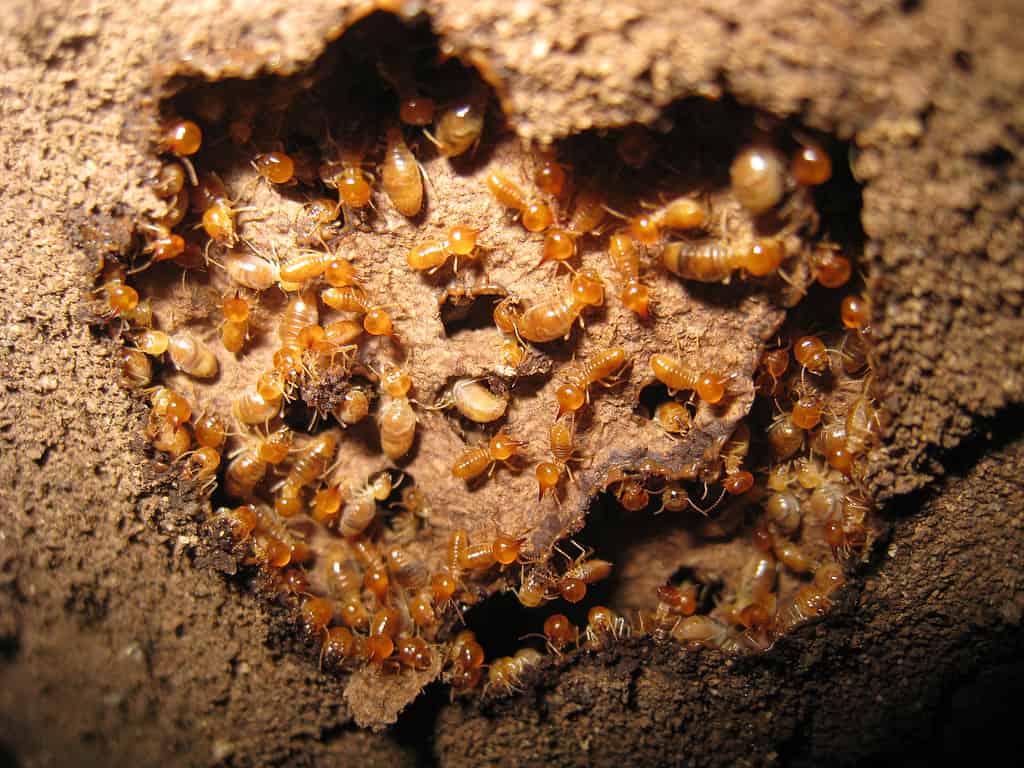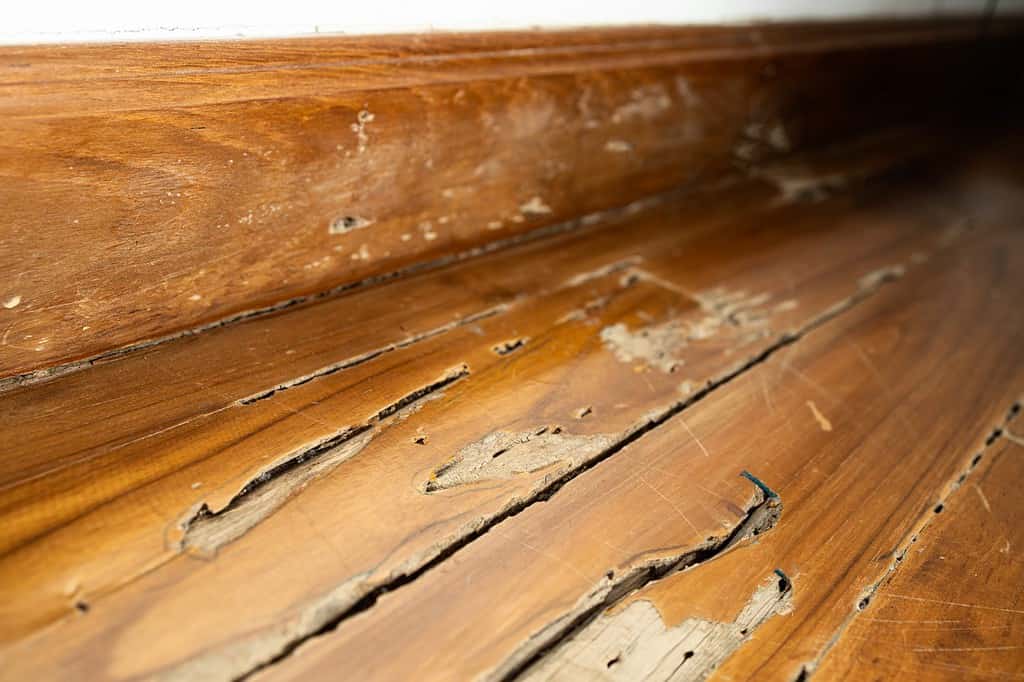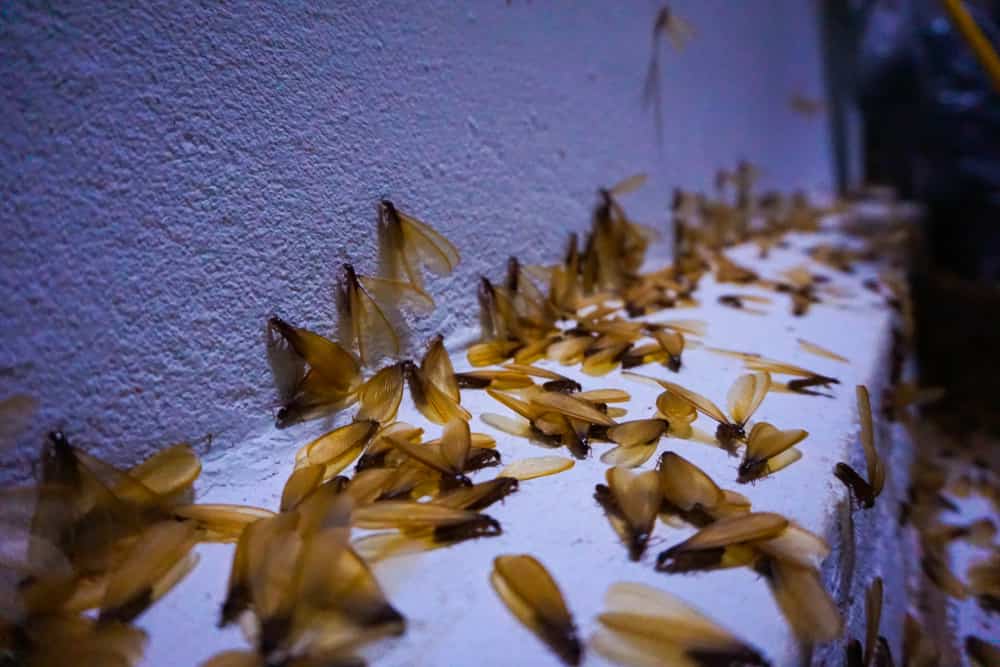Termites are small insects that cause big problems. These pests cause billions of dollars in damage each year for homeowners in America. They damage the structural integrity of buildings, which takes a pretty penny to fix. From the onset of a termite infestation, major structural damage can occur in as little as six months to a year. The worst part is that you often don’t even know they’re there until it’s too late.
How bad are termites in Louisiana? Discover the answer now, including types, risks, and how to prevent them.
Types of Termites in Louisiana

Subterranean termites prefer moisture and can cause more damage than drywood termites.
©Cheng_Wei/iStock via Getty Images
There are two main types of termites in Louisiana: drywood and subterranean. Drywood termites do not need soil or moisture to thrive; instead, they inhabit dry wood. These termites are less common than subterranean termites, but they are primarily found in coastal areas or Southern states. They can cause extensive damage, as they chew inside wooden objects, weakening their interiors.
While both types of termites can cause substantial damage, subterranean termites are typically worse. They live in both wood and soil and require moisture. These termites build mud tubes and bring soil inside wood. They invade from underground, and a single colony can spread out over an entire acre surrounding a house. Subterranean termites have saw-toothed jaws and eat non-stop, leading to structural damage and collapse.
Types of subterranean termites include eastern subterranean, Formosan subterranean, western drywood, and dark southern drywood.
Are Termites a Problem in Louisiana?
Louisiana is one of the worst states in the country for termite infestations. These insects thrive in hot, humid environments and are most prevalent in the state from late March through July, but they can be found any time of the year. Termites wreak havoc across the state and most areas are in high probability zones, meaning homes in Louisiana will need regular inspections and exterminations.
In Baton Rouge alone, termites cause hundreds of millions of dollars’ worth of damage each year, costing individual homeowners thousands in yearly prevention and control methods. Termites are a year-round problem in Louisiana and special care is needed to prevent these pests from spreading and causing structural damage.
What Are Signs of Termites?

Look for warping, buckling, pinholes, and maze-like patterns.
©CGN089/Shutterstock.com
If you’re a property owner in Louisiana, you may be wondering about the signs of a termite infestation.
One of the biggest problems with termites is that they can live inside your home for a long time before you actually notice them, as they live underground or burrow inside wood. In fact, many people don’t find them until major damage has already occurred. Thankfully, there are warning signs you can catch.
Here are several ways you can tell if you have termites:
- Hollow sounding walls and other wooden structures when tapped
- Buckling wooden stairs and floorboards
- Blister spots
- Sagging drywall or ceilings
- Windows and doors that are difficult to open due to buckling or warping of the wood
- Pinpoint holes in the drywall
- Loose tiles
- Maze patterns in wood, including furniture
- Piles of drywood pellets (drywood termite droppings)
- Mud tubes near the foundation of the house
- Discarded wings, especially near windows and doors
- Swarms of flying termites that break off from their colony
- Moldy or musty smell without a noticeable source
What Months Do Termites Swarm in Louisiana?
Different types of termites swarm at different periods throughout the year and even differ in times of the day. Most swarms in Louisiana occur from early spring through mid-summer. The eastern subterranean is usually one of the first to swarm in the state, beginning in February and lasting until May. They also like to come out in the morning. However, some subspecies of eastern subterranean termites can swarm in both the spring and fall. You are more likely to find drywood termites swarming during the summer in the afternoons.
How Risky is a Termite Infestation? Are They a Serious Problem?

A termite infestation can lead to significant destruction of your home’s structural integrity.
©Panomluttikorn Junsiri/Shutterstock.com
You might have heard about termites causing damage, but how serious is it? While these pests don’t pose significant health risks to humans, they can cause extensive damage to buildings, homes, and any wood-based items within them. A termite infestation can lead to significant destruction of your home’s structural integrity.
How to Prevent Termites in Louisiana
You want to keep the soil around the foundation of your home dry by using proper grading and drainage, including repairing broken gutters and promptly fixing leaks. Don’t plant trees and other plants too close to the property. Trees and plants should not touch wooden surfaces. Also, do not place piles of firewood near the dwelling. If there are any cracks in the foundation, fill them immediately, along with any other openings where termites could gain access. Finally, perform regular inspections and be on the lookout for any signs of damage and colonies.
The photo featured at the top of this post is © Oasishifi/Shutterstock.com
Thank you for reading! Have some feedback for us? Contact the AZ Animals editorial team.







